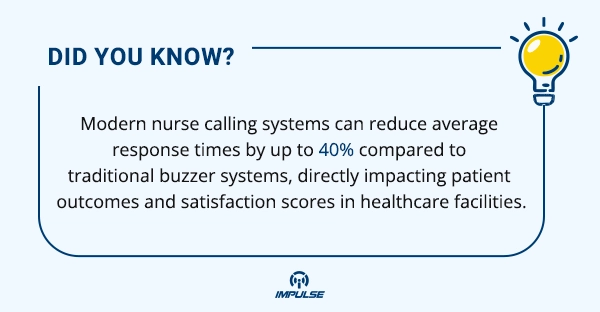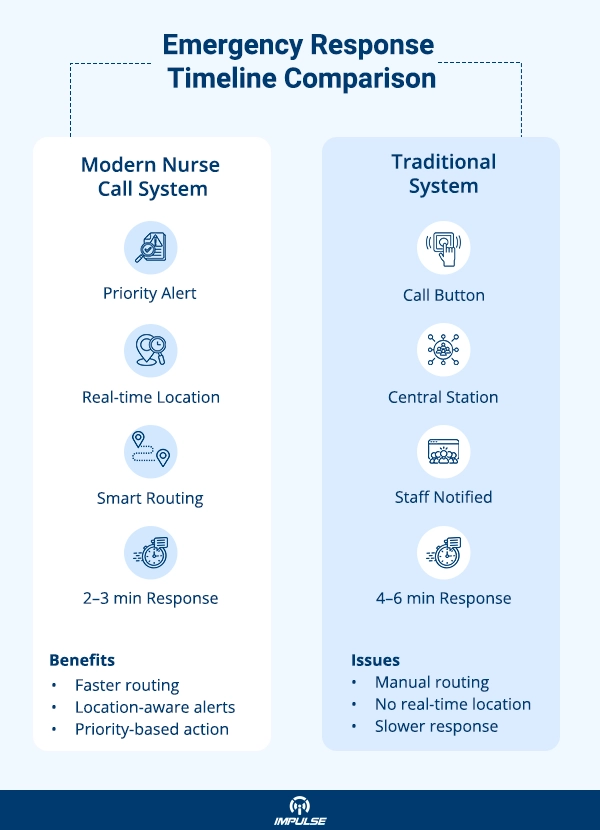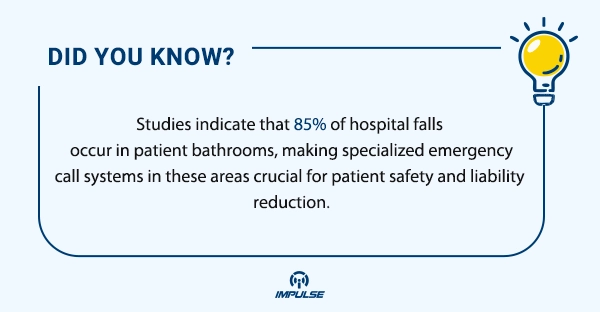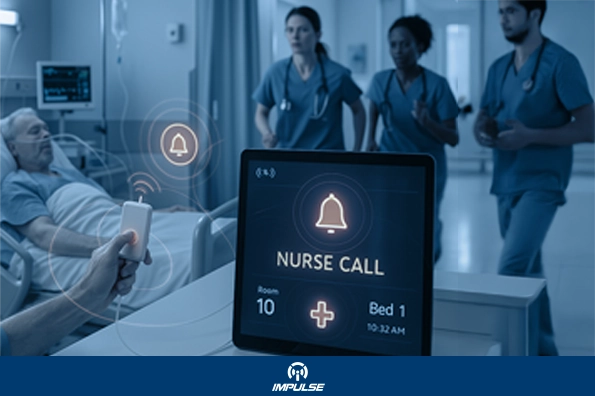Healthcare emergencies don’t wait for convenient moments. When a patient’s condition deteriorates rapidly, when complications arise during recovery, or when emergency assistance is needed in critical moments, the difference between life and death often comes down to seconds. The backbone of effective emergency response in modern hospitals lies not just in the skill of medical professionals, but in the communication infrastructure that connects patients to caregivers instantly and efficiently.
The evolution of nurse calling systems represents one of the most significant technological advances in healthcare communication, fundamentally reshaping how hospitals respond to emergencies. These sophisticated systems have moved far beyond simple call buttons to become intelligent networks that prioritize, route, and manage emergency communications with unprecedented precision and speed.

The Critical Gap in Hospital Emergency Response
Emergency situations in hospitals demand split-second decisions and immediate action. When a patient experiences cardiac arrest, respiratory distress, or sudden complications, every second counts. Yet many healthcare facilities still rely on outdated communication systems that create dangerous delays between patient distress and clinical intervention. The traditional approach of patients pressing a basic call button and waiting for staff response through antiquated paging systems is no longer sufficient for modern healthcare demands.
Hospital emergency response systems face mounting pressure to deliver faster, more accurate, and more efficient patient care. Emergency nurse call systems have emerged as the technological backbone that bridges the critical gap between patient need and clinical response, fundamentally transforming how healthcare facilities manage urgent situations.
Revolutionary Technology Reshaping Healthcare Communication
The Evolution of Healthcare Communication Systems
Modern nurse calling systems represent a quantum leap from simple buzzer mechanisms to sophisticated digital transformation in healthcare infrastructure. These advanced nurse call system features integrate seamlessly with hospital information systems, creating a comprehensive patient alert system that prioritizes emergencies based on severity, location, and available staff resources.
Smart healthcare solutions now incorporate artificial intelligence algorithms that analyze call patterns, predict potential emergencies, and automatically route alerts to the most appropriate healthcare personnel. The Intelligent Healthcare Communication Host serves as the central nervous system for these operations, processing thousands of communications simultaneously while maintaining crystal-clear audio quality and instant response capabilities.
Advanced Features Transforming Patient Care
Contemporary nurse call technology extends far beyond basic communication. These systems now feature:
Multi-Modal Communication: Patients can communicate through voice, text, or emergency buttons depending on their condition and mobility status. The Bedside Station with Handheld exemplifies this flexibility, allowing patients to maintain communication even when movement is restricted.
Real-Time Location Services: Staff members receive precise location data with every alert, eliminating confusion about which room or area requires attention. Visual indicators like corridor lighting systems provide immediate directional guidance.
Priority-Based Alerts: Emergency calls automatically receive highest priority routing, ensuring critical situations receive immediate attention while routine requests are queued appropriately.
Integration with Medical Devices: Modern systems can automatically detect when medical equipment alarms activate, creating seamless coordination between technological monitoring and human response.

Specialized Solutions for Critical Areas
High-risk areas require specialized communication solutions. The Bathroom Call Station addresses one of the most vulnerable locations where patients frequently experience falls, medical emergencies, or complications from procedures. These waterproof, easily accessible devices ensure that even in compromised positions, patients can immediately summon assistance.

Visual Communication Enhancement
The integration of visual alert systems revolutionizes how staff identify and respond to emergencies. Corridor lighting systems provide immediate visual feedback about call status and urgency levels. The Three Color Corridor Light uses distinct color coding to communicate different alert levels – green for normal status, yellow for routine calls, and red for emergency situations. This visual system allows staff to assess situations immediately upon entering a corridor, even before receiving detailed information through their communication devices.
Desire: Measurable Impact on Hospital Operations
Enhanced Response Times and Patient Outcomes
Healthcare facilities implementing advanced nurse calling systems report significant improvements across multiple operational metrics. Emergency response times decrease substantially when staff receive precise, prioritized information about patient needs. The Medical Care Host centralizes all communication data, providing real-time analytics that help administrators identify bottlenecks and optimize staff deployment.
Improved Staff Efficiency and Job Satisfaction
Modern nurse call technology dramatically reduces the physical and mental stress on healthcare workers. Instead of constantly monitoring multiple areas or responding to unclear alerts, staff receive precise, actionable information that allows them to prioritize effectively. This clarity reduces burnout, improves job satisfaction, and ultimately leads to better patient care quality.
Regulatory Compliance and Risk Management
Advanced systems automatically document all communications, response times, and outcomes, creating comprehensive audit trails that satisfy regulatory requirements. This documentation proves invaluable during accreditation reviews, legal proceedings, or quality improvement initiatives.
Cost Optimization Through Technology
While initial implementation requires investment, the long-term financial benefits are substantial. Reduced liability from faster emergency response, improved patient satisfaction scores affecting reimbursement rates, and enhanced staff efficiency all contribute to significant return on investment.
Implementing Transformative Emergency Response Solutions
Strategic Implementation Approach
Successful deployment of comprehensive nurse calling systems requires careful planning and phased implementation. Healthcare facilities should begin with high-priority areas such as intensive care units, emergency departments, and surgical recovery areas before expanding to general patient floors.
The implementation process should include:
Assessment Phase: Comprehensive evaluation of current communication infrastructure, identification of critical gaps, and analysis of specific facility needs.
Design Phase: Custom system architecture incorporating existing hospital information systems, staff workflow patterns, and patient population characteristics.
Installation Phase: Professional installation with minimal disruption to ongoing patient care operations.
Training Phase: Comprehensive staff education ensuring full utilization of advanced system features.
Optimization Phase: Continuous monitoring and adjustment based on usage patterns and outcomes data.
Integration with Existing Systems
Modern nurse calling systems seamlessly integrate with electronic health records, patient monitoring systems, and hospital communication networks. This integration creates a unified healthcare communication ecosystem that enhances rather than complicates existing workflows.
Scalability and Future-Proofing
Contemporary systems are designed for expansion and technological evolution. As healthcare facilities grow or technology advances, these platforms can accommodate additional features, expanded coverage areas, and enhanced capabilities without requiring complete system replacement.
Return on Investment Considerations
Healthcare administrators can expect measurable returns through multiple channels: reduced liability insurance costs, improved patient satisfaction scores affecting government reimbursements, enhanced staff retention reducing recruiting and training expenses, and operational efficiency gains enabling better resource allocation.
Conclusion
Advanced nurse calling systems represent a fundamental shift toward patient-centered care that prioritizes rapid response, clear communication, and measurable outcomes. As healthcare facilities face increasing demands for improved satisfaction, compliance, and efficiency, these intelligent communication systems become essential, not just beneficial.
The integration of smart healthcare solutions creates a comprehensive ecosystem supporting both routine care and emergency response. These systems enhance patient experience while equipping healthcare workers with tools for exceptional care delivery.
Healthcare facilities investing in advanced nurse calling systems today are building the foundation for tomorrow’s care standards. Every second saved in emergency response improves patient safety, and every communication efficiency gain leads to better outcomes. The technology exists, benefits are proven, and the time for transformation is now.
Schedule a personalized demonstration with our healthcare technology specialists to see how Impulse’s nurse calling systems can significantly reduce response times, improve staff coordination, and ultimately enhance patient care quality throughout your facility.


